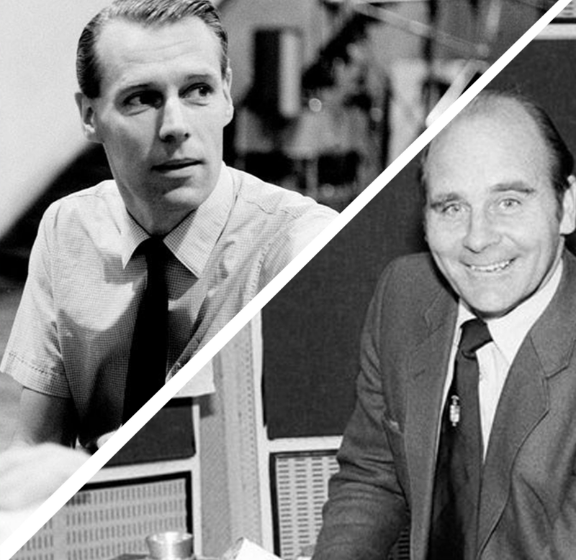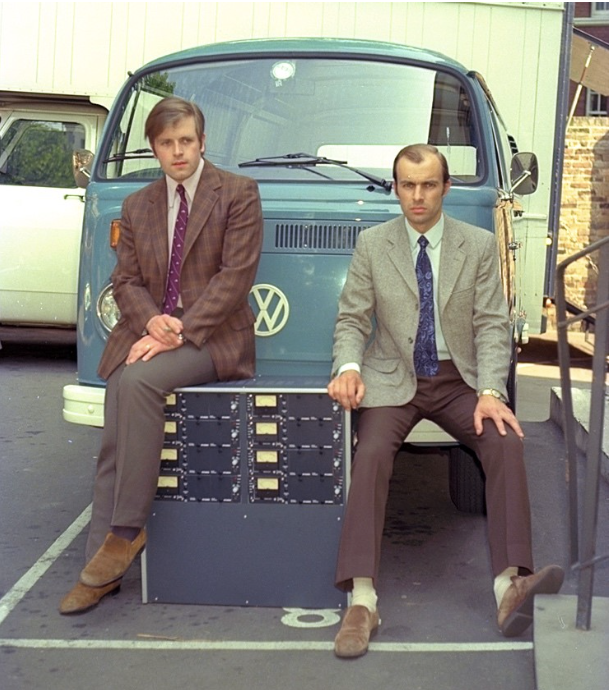An immense amount of innovation and development in the history of recorded music, and more significant to this piece, remote recording, has taken place in St Johns Wood, at No.3 Abbey Road. As we today celebrate David Hepworth’s book release for Abbey Road: The Inside Story of the World’s Most Famous Recording Studio, we uncover the history of remote recording like never before; discovering first-hand accounts from the engineers that were at the centre of this historic movement in recorded music.
The Beginnings of Remote Recording
Remote recording first developed out of the practice of making field recordings with high-quality equipment. The earliest such recordings were rather elementary, undertaken in the 1920s and 1930s, beginning with Ralph Peer . In June 1923 Peer took remote recording equipment from New York to Atlanta, Georgia to record local music styles like the blues in the places they were played and performed, rather than in the recording studio.
Peer carried a disc-cutting machine and recorded musicians directly to disc, achieving something rather remarkable in those few years. However on the other side of the pond, the Lanica mobile unit wasn’t too far behind.

History of Remote Recording at Abbey Road
Since Abbey Road Studios opened in 1931, there has always been an element of mobile recording facilities to cater for projects taking place in large cathedrals, town halls and churches. These venues provided greater space, a certain acoustic or even just a convenient location for the artists or a particular orchestra. It was quite common, if the big studios in London were fully booked, for a composer wishing to work with London based musicians to hire the Abbey Road mobile crew to ensure the score could be completed on time with first call musicians. EMI had also realised the importance of being able to record not just in London, but in the native countries of their leading European artists.
This was all achieved with the Lanica mobile unit, called this because it was built on a Lanica chassis. The unit consisted of a purpose-built body on a two-ton Lanica chassis, equipped with a complete recording system including two weight-driven lathes. A jacking system was used during the recording to support each corner and the power for amplifiers, suction and heating of the waves came from the batteries which were continually being recharged during periods off the road. The Abbey Road mobile became renowned for its versatility and in the competent hands of driver, Harry Hands, recorded 100s of iconic recordings.
The unit travelled extensively, recording all manner of sessions. One of its earliest locations was the Temple Church in London where in 1927 a religious recital was recorded. Having a couple of waxes left over after the session, the engineer asked a choirboy to sing something “just to use them up”. The boy was Ernest Lough and he chose to sing Hear My Prayer and O For The Wings of a Dove. Within a matter of weeks, the record was selling in huge quantities and over half a century later, it remains a steady seller.
Engineer David Bicknell remembers the Lancia mobile and his first trip out in 1928. “We went to the Albert Hall to record Malcolm Sargent conducting a recording of Elijah. Because of the old wax machines, it was difficult to record accurately and recording in front of a concert audience was particularly difficult. You couldn’t stop the recording if anything went wrong and you had to make sure the whole thing started within a limited number of seconds in order to avoid a lengthy run which would use up half the record before the concert had even started. The timing had to be extremely accurate.”
In Abbey Road Studios and David Hepworth’s brand-new book Abbey Road: The Inside Story of the World’s Most Famous Recording Studio, which is out today (6 October), Hepworth goes on to further explain the significance of the mobile units to the beginnings of some of the most esteemed engineers:
“The younger employees joining the organization in the early 1950s were still schooled in the old ways. Young George Martin continued to be dispatched to Scotland with a mobile recording unit complete with disc-cutting lathe to literally cut twenty sides with Scottish country dance maestro Jimmy Shand, a strong seller among Scots at home and in exile. Not only did this save the expense of bringing all the musicians down to London and paying for their accommodation, it also meant their work need no longer be conducted according to the studio clocks. For the staff there was often much to be said for recording on location. One of the first duties of Ken Townsend, who had joined the company on the same day as George Martin, was to visit Blackpool with the company’s mobile recording equipment. One of EMI’s biggest-selling recording artists at that time was Reginald Dixon, whose instrument, the mighty Wurlitzer of the ballroom of Blackpool Tower, was anything but mobile.”

Fast Forward to the classical heyday of the ‘70s and ‘80s, Abbey Road mobile engineers Graham Kirby and Richard Hale were in huge demand in the UK and abroad, often travelling to the States or the deepest depths of Eastern Europe during the Cold War era. Naturally, as Abbey Road started doing more films in the late ‘80s, the mobile team found themselves catering for a new clientele during the ‘90s and ‘00s and were often on the road recording music to picture.

Purchase David Hepworth’s Abbey Road: The Inside Story of the World’s Most Famous Recording Studio
To celebrate the 90th anniversary of the iconic Abbey Road Studios, the studio has partnered with music journalist David Hepworth to write the story of Abbey Road as never told before. Featuring interviews with artists, producers and sound engineers, transcripts, photographs, and much more, this is the story of how the first purpose built recording studio would become a phenomenon.
Get your copy from the Abbey Road Shop now!